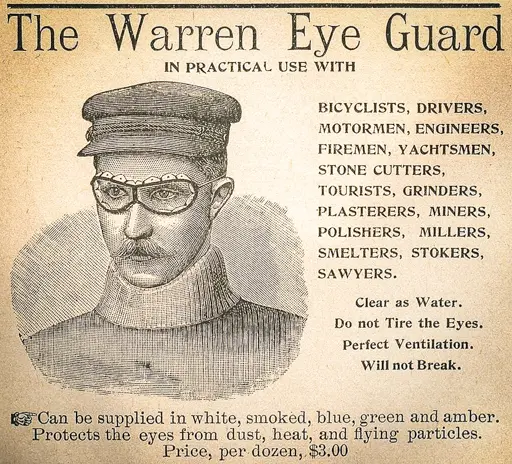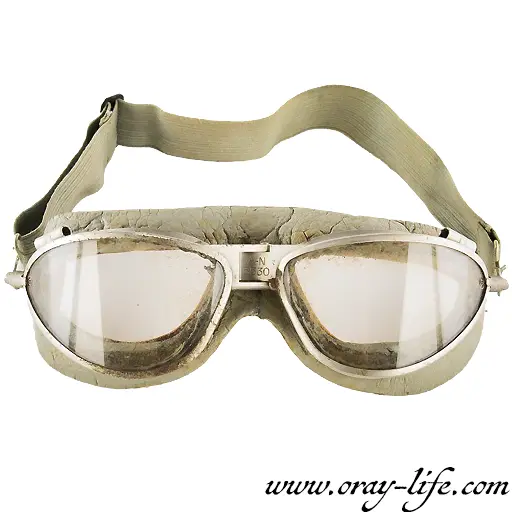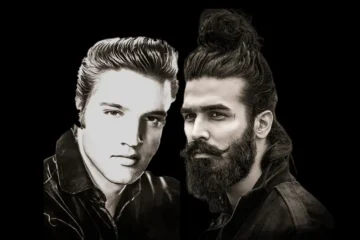Today, everyone knows Aviator type sunglasses. However, very few really know its history. This article sets out to delve into the fascinating history of this very particular design which today makes it a totally iconic element of men’s fashion.
1/ The differentiating characteristics of Aviator type sunglasses

As the name suggests, Aviator sunglasses were created to meet the needs of airplane pilots. Indeed, between the two world wars, aviation (civil and military) experienced unprecedented developments to the point of becoming one of the main contributors to the victories of the various armies.
As aviation became structured and professionalized in the 1920s and 1930s, pilots quickly realized the constraints they had in terms of vision and resistance to the sun’s rays. It was at this time that the first specifications were established by the Air Force to be able to provide sunglasses to aircraft pilots.
As usual, the different armies (notably the American army) began to formalize technical needs in order to carry out group purchases (which brought visibility and volume to the various eyewear manufacturers).
It is in this context that in the 1930s the American army established the following technical requirements concerning:
- Ensure panoramic vision
- Provide wraparound protection
- Protect against the sun’s rays
- Protect against sun glare
- Protect against ultraviolet and infrared rays
- Reduce glare without reducing the quality of vision (details, brightness, etc.)
- Be comfortable
2/ A design inspired by glasses intended for car driving

In the 1900s to 1920s, many cars did not have a roof or front windshield. As a result, car drivers were forced to protect their eyes from wind, bad weather, insects, light and sun reflections while preserving the quality of vision and appreciation of different details.
This is how certain eyewear manufacturers such as Warren Eye Guard developed glasses intended for car drivers but also for cyclists, firefighters, boat pilots, miners, etc. These models offered the advantage of not distorting the images while protecting the eyes from wind and projections.
For a need for versatility, the lenses were often transparent but we already find a great similarity in the design compared to aviator sunglasses. In fact, these glasses had to be covering, protective and panoramic.

3/ The Autoglas model of 1911: the main inspiration for Aviator-type glasses

In 1911, the optician Stern released a pair of glasses which would be a real revolution in terms of design and which would constitute an inspiration for all Aviator-type glasses to come.
This pair of glasses was not intended to protect the sun’s rays but rather to protect the eyes against the wind and insects without distorting the image or creating unwanted reflections.
Apart from removing the traditional elastic that held the lenses, we find in this pair of glasses all the characteristics of what was destined to become Aviator glasses: space above and below the eyes, enveloping glass, reduced central spacing and design inspired by the eyes of flies…
Unfortunately, at the time, cars were only accessible to the privileged, which made these glasses too elitist to be able to democratize this revolution in terms of eyewear design. For this, there was a need for a link between this innovative design (but unknown at the time) and its popularization decades later (to become a global phenomenon).
This will be brought about by the two world wars and the need to protect the eyes of army plane pilots.

4/ Competition between different manufacturers to offer a technical solution

The Chas. Fischer Spring Co. were among the first to respond to the needs of aircraft pilots with the USAAF B-7 model.
Indeed, these glasses were particularly suitable for driving planes without a closed cockpit (protected from the outside air). A little later, the same manufacturer modernized the design of its glasses with the famous AN-6530 model with larger optics, particularly above and below the eyes.

As planes are modernized in particular through closed cockpits protected from the wind, eyewear manufacturers also had to modernize their offering with a lighter and more comfortable design while offering better protection against the sun’s harmful rays (and reflections in the cockpit).
Thus American Optical, Willson and Bausch & Lomb were the main American manufacturers to meet the specifications of the American Air Force.
Among the various manufacturers, Bausch & Lomb began to stand out and stand out from the crowd for two reasons:
- Thanks to the popularity of its models with military pilots
- Thanks to its Ray-Ban brand which allowed them to market the same models to civil society
However, it is false to say that Ray-Ban invented the design of Aviator sunglasses. The brand’s first models in fact took up the types of lenses imposed by the American army under the acronyms AN6531 type 1 and type 2 (‘AN’ for Army/Navy) which defined the size of the lenses and their shape with the imperative of cover the spaces above and below the eyes well.

The Bausch & Lomb company, which will be known thanks to its Ray-Ban brand, has only responded to the army’s specifications with lens models corresponding to the imposed models.
5/ The genius of Ray-Ban: having been able to democratize the Aviator design to as many people as possible
As seen previously, many pairs of glasses had seen the light of day with a fairly similar design (particularly for driving) without achieving real commercial success on a large scale.

The worldwide success of Ray-Ban’s fame (contraction of ‘SunRay-Banning’) is mainly based on three elements:
- The supply of its models to American army pilots during the Second World War (which provided the manufacturer with the necessary volume as well as order books over several years)
- Ray-Ban sunglasses became a symbol of victory and American lifestyle (just like jeans, chewing gum, etc.)
- Marketing its models to civil society with marketing genius around the image of the American pilot and the biggest stars of the time
Since then, the reputation of this emblematic brand has continued to grow throughout the world, notably by succeeding in securing choice ambassadors among the biggest international stars (such as Freddy Mercury, etc.).
Since then, many brands have tried to offer models of Aviator sunglasses but without experiencing the same global success. This type of model is in fact clearly associated with the Ray-Ban brand and similar models offered by other brands are often associated with pale copies in the minds of consumers.
6/ Ray-Ban Aviator-Reverse, an attempt to modernize the brand’s emblematic model

In 2023, Ray-Ban released a new version of its iconic Aviator Sunglasses. Far from being a simple improvement, a new color or a new customization option, this ‘Reverse’ version was a true innovation.
Indeed, the glass instead of being curved outwards (as on the traditional model), the lens of the glasses is inverted towards the inside.
Just a whim? Simple technical feat? Not at all, in addition to giving a new design and a new look, this new version of the Aviator offers a completely different exterior reflection on the lenses.
This totally changes the reflection of the image and light for people looking at the wearer of these sunglasses. It is therefore undeniable that this innovation gives an extremely modern and slender look to the wearers of this pair of glasses.

Follow me on Instagram


